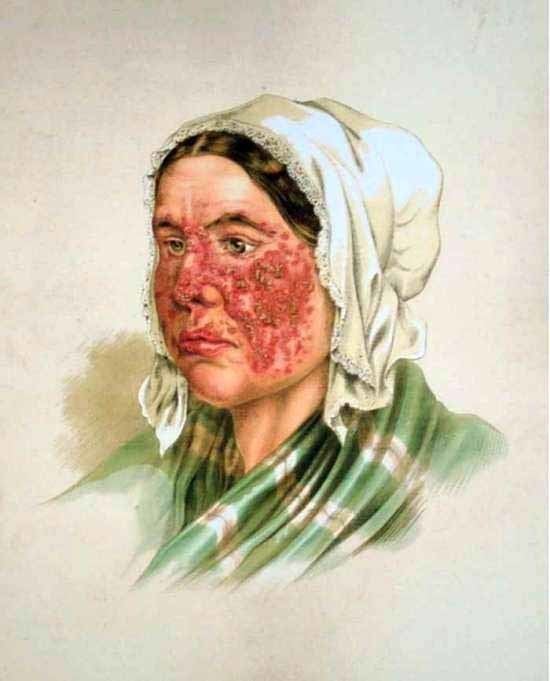ICD-9-CM 695.4 | ICD-10 L93 (ILDS L93.010) | |
 | ||
Lupus erythematosus is a name given to a collection of autoimmune diseases in which the human immune system becomes hyperactive and attacks healthy tissues. Symptoms of these diseases can affect many different body systems, including joints, skin, kidneys, blood cells, heart, and lungs. The most common and severe form is systemic lupus erythematosus.
Contents
Classification
Lupus erythematosus may manifest as systemic disease or in a purely cutaneous form also known as incomplete lupus erythematosus. Lupus has four main types:
Of these, systemic lupus erythematosus (also known as SLE) is the most common and serious form.
A more thorough categorization of lupus includes the following types:
Signs and symptoms
Symptoms vary from person to person, and may come and go. Almost everyone with lupus has joint pain and swelling. Some develop arthritis. Frequently affected joints are the fingers, hands, wrists, and knees. Other common symptoms include:
Photosensitivity
Photosensitivity is a known symptom of lupus, but its relationship to and influence on other aspects of the disease remain to be defined. Causes of photosensitivity may include:
Causes
It is typically believed that Lupus is influenced by multiple genes. Lupus is usually influenced by gene polymorphisms, 30 of which have now been linked with the disorder. Some of these polymorphisms have been linked very tentatively however, as the role that they play or the degree to which they influence the disease is unknown. Other genes that are commonly thought to be associated with Lupus are those in the Human leukocyte antigen (HLA) family, which are largely related to healthy functioning of the immune system. There have been several cases where a single gene influence appears to be present, but this is rare. When a single gene deficiency does cause Lupus, it is usually attributed to the genes C1, C2, or C4. The influence of sex chromosomes and environmental factors are also noteworthy. Usually, these factors contribute to Lupus by compromising the immune system.
Age difference
Lupus can develop in any age but most commonly in ages 15 to 44 with varying results. Typically, the manifestation of the disease tends to be more acute in those affected who are of younger age. Women are more likely to get it than men. Patients with juvenile onset Lupus in particular, are vulnerable to mucocutaneous (alopecia, skin rash, and ulceration of the mucus membranes) manifestations of the disease more so than any other age group. However, patients with late onset Lupus have a much higher mortality rate. Nearly 50% of those with late onset Lupus die of their affliction. This is most likely due to the age of the patients with late onset Lupus since the manifestation of their disease is much less severe than younger patients. Women who are of childbearing age are also particularly at risk.
Differences in ethnicity
Substantial data have been found to indicate that certain ethnic populations could be more at risk for Lupus Erythematosus, and have a better or worse prognosis. Asian, African, and Native Americans are more likely to get Lupus than Caucasians. Caucasians seem to generally have a more mild manifestation of the disease. Their survival rates after five years were typically around 94%-96%, while patients of African, and some Asian ethnicities had survival rates closer to 79%-92%. The only documented ethnicity that had a higher survival rate than Caucasians were Koreans, who had survival rates nearer to 98%. Among Caucasians, the most common causes of death were complications involving the cardiovascular system, the respiratory system and problems with malignancies.
Diagnosis
x-ray ,CT,MRT,blood test, serological test
Treatment
Treatment consists primarily of immunosuppressive drugs (e.g., hydroxychloroquine and corticosteroids). An interesting second line drug is methotrexate in its low-dose schedule. In 2011, the U.S. Food and Drug Administration (FDA) approved the first new drug for lupus in more than 50 years to be used in the US, belimumab. In addition to medicative therapy, due to the psychological and social impacts that Lupus may have on an individual, Cognitive Behavioural Therapy (CBT) has also been demonstrated to be effective in reducing stress, anxiety, and depression in lupus sufferers.
